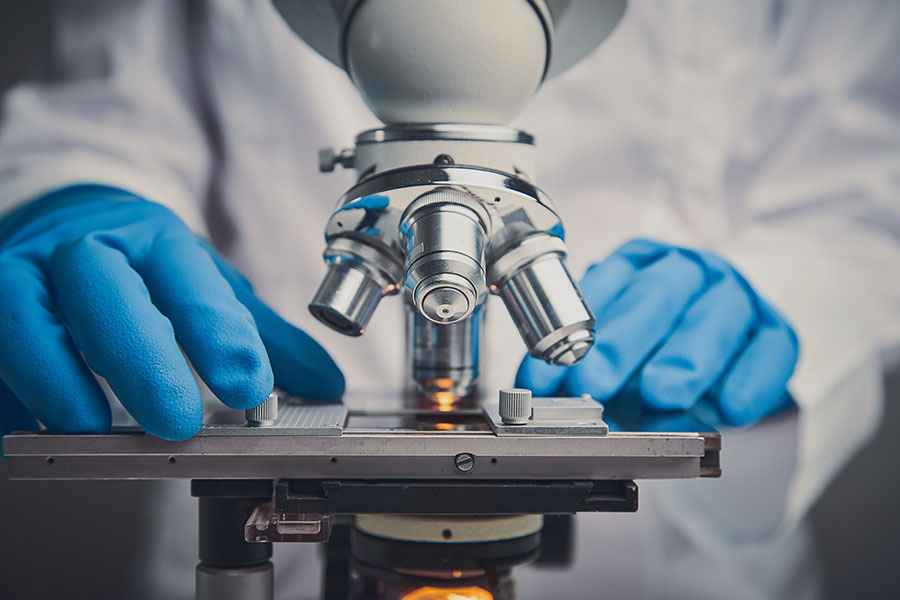Forensics and Materials
The scanning electron microscope (SEM) is one of the most powerful and useful tools for material analysis. SEMs use electrons rather than light waves to examine surfaces, permitting much greater magnification, resolving power and depth of field. SEM analysis provides us with high resolution imaging at magnifications up to 300,000X.
SEM analysis allows us to examine and characterize particles and nanoparticles, fracture surfaces, surface morphologies, composites and their constituents, and microstructures of prepared cross-sections.
Request QuoteSEM Capabilities
- High resolution SEM imaging
- Material characterization
- Fractured surface analysis
- Polymer cross-section analysis
- Particle and surface morphology studies
- Particle size distribution determination
- Contamination analysis
- SEM/EDS elemental mapping

Field Emission SEM
The Field Emission Scanning Electron Microscope (FE-SEM) is configured similarly to a conventional SEM, except that a field emission electron source is used, allowing higher resolution imaging, increased signal to noise ratio, and increased depth of field.
An FE-SEM source produces electrons by applying a high voltage to a very sharp point and extracting the electrons directly, only from the point. The coherence and very small diameter of this source increases the useful magnification of the SEM by a factor of ten
Analytical Fourier Transform Infrared Spectroscopy (FTIR) is primarily used for qualitative and quantitative analysis of organic compounds, and also for determining the chemical structure of many inorganic materials.




